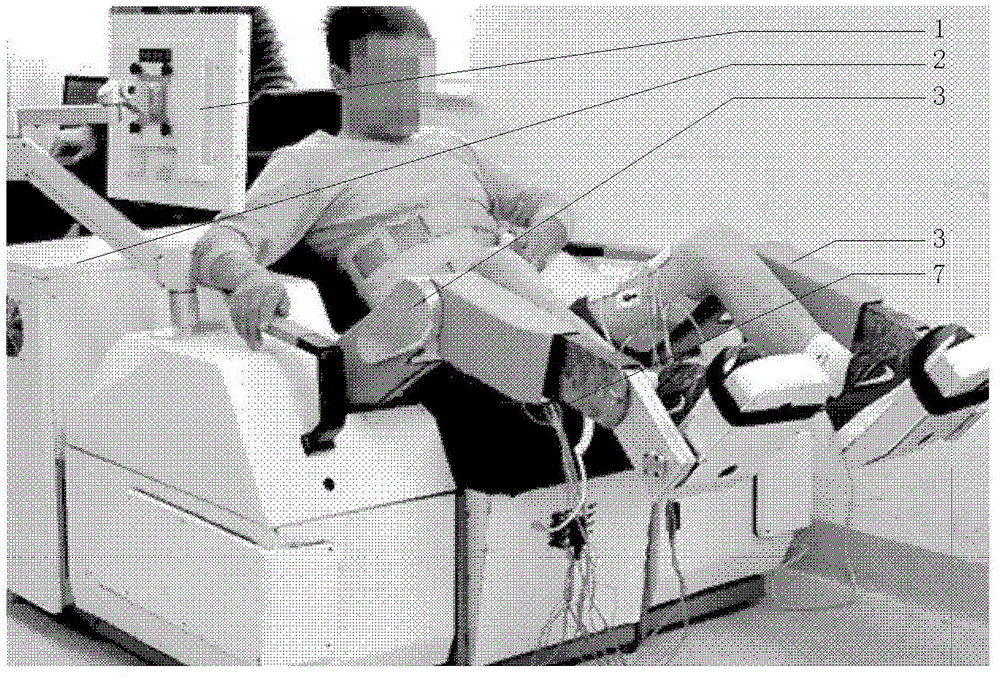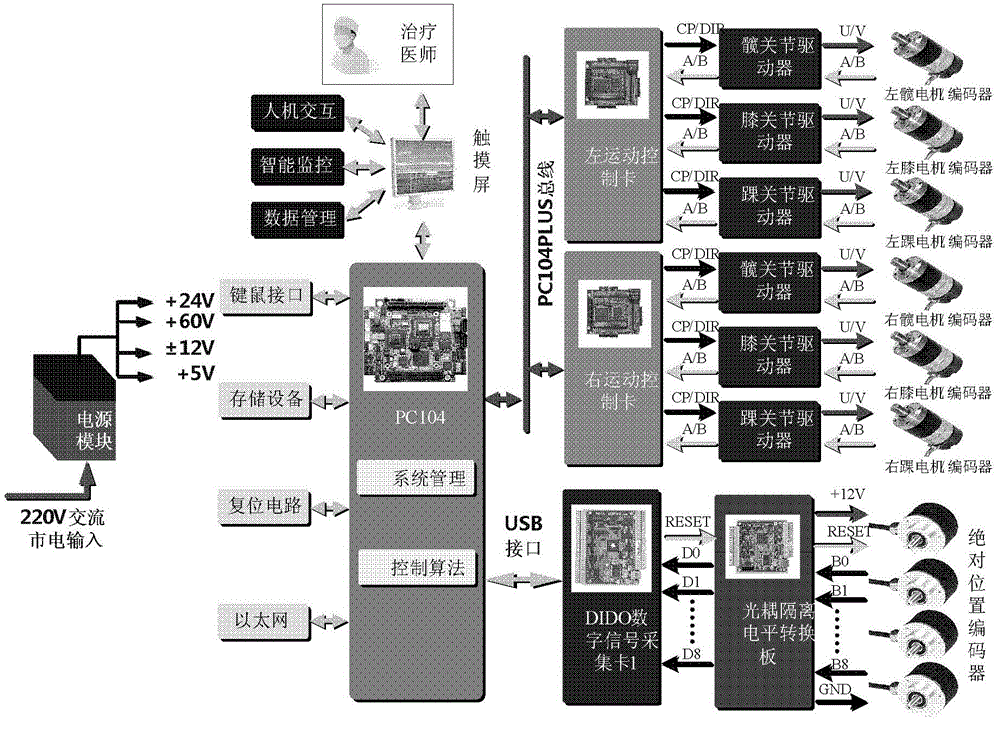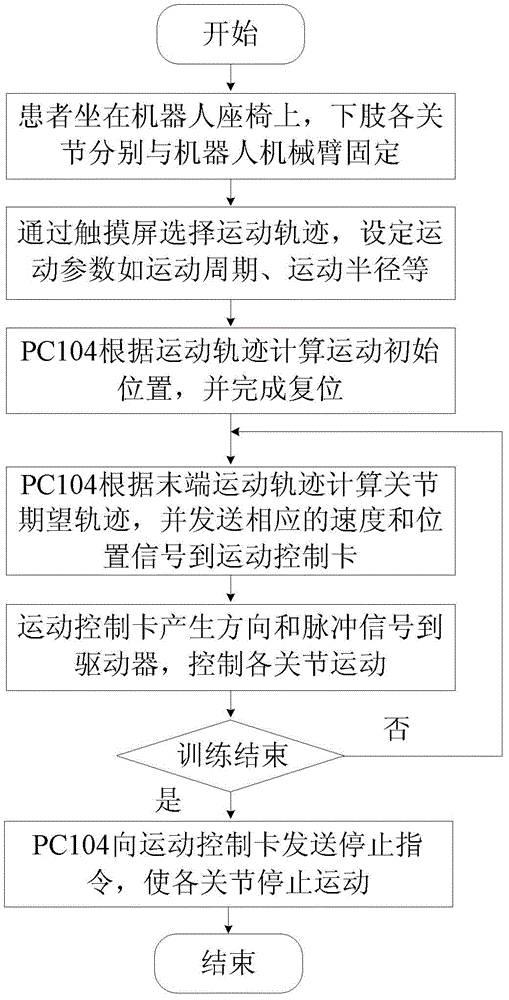Seated horizontal type lower limb rehabilitation robot and corresponding passive training control method
A rehabilitation robot and robot technology, applied in the direction of passive exercise equipment, physical therapy, etc., can solve the problems of high labor intensity, inability to simulate training, and limit the rehabilitation effect, so as to achieve the effect of increasing enthusiasm and improving the rehabilitation process
- Summary
- Abstract
- Description
- Claims
- Application Information
AI Technical Summary
Problems solved by technology
Method used
Image
Examples
Embodiment Construction
[0022] In order to make the object, technical solution and advantages of the present invention clearer, the present invention will be described in further detail below in conjunction with specific embodiments and with reference to the accompanying drawings.
[0023] figure 1 is a structural diagram of a sitting-lying lower limb rehabilitation robot according to an embodiment of the present invention, such as figure 1 As shown, the sitting and lying lower limb rehabilitation robot of the present invention is composed of two parts, a mechanical body and an electrical control system, wherein the mechanical body includes a seat 7 and two mechanical arms 3, and each mechanical arm 3 has three degrees of freedom (joints) , respectively corresponding to the hip, knee, and ankle joints of the lower limbs of the human body. The degrees of freedom of the robotic arm are also called the joints of the robot or the joints of the robotic arm; the electrical control system includes a man-mac...
PUM
 Login to View More
Login to View More Abstract
Description
Claims
Application Information
 Login to View More
Login to View More - R&D
- Intellectual Property
- Life Sciences
- Materials
- Tech Scout
- Unparalleled Data Quality
- Higher Quality Content
- 60% Fewer Hallucinations
Browse by: Latest US Patents, China's latest patents, Technical Efficacy Thesaurus, Application Domain, Technology Topic, Popular Technical Reports.
© 2025 PatSnap. All rights reserved.Legal|Privacy policy|Modern Slavery Act Transparency Statement|Sitemap|About US| Contact US: help@patsnap.com



